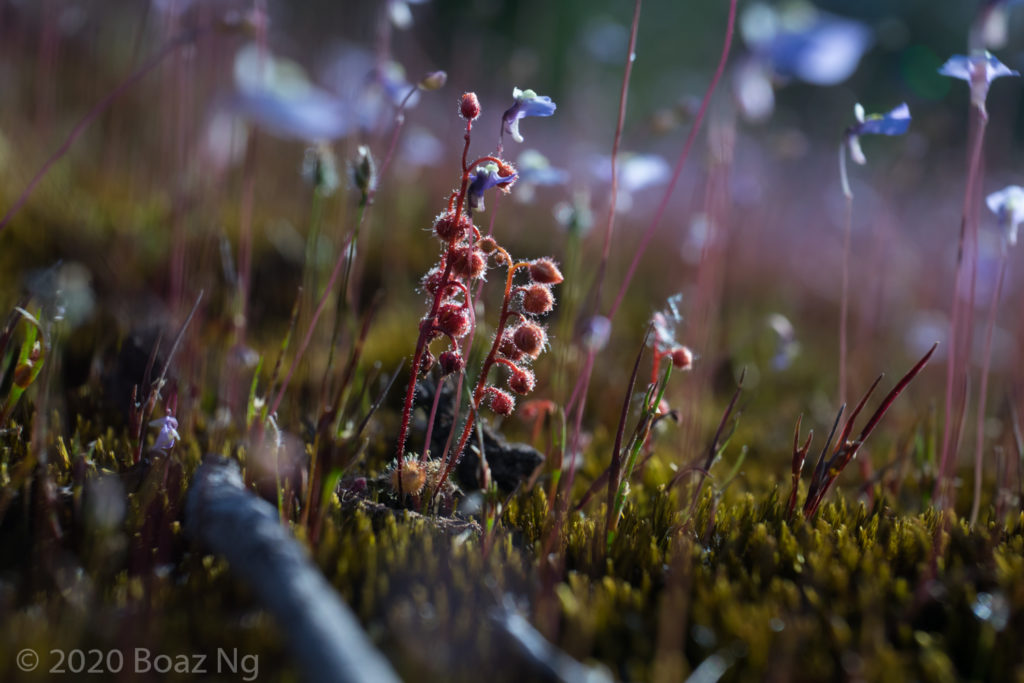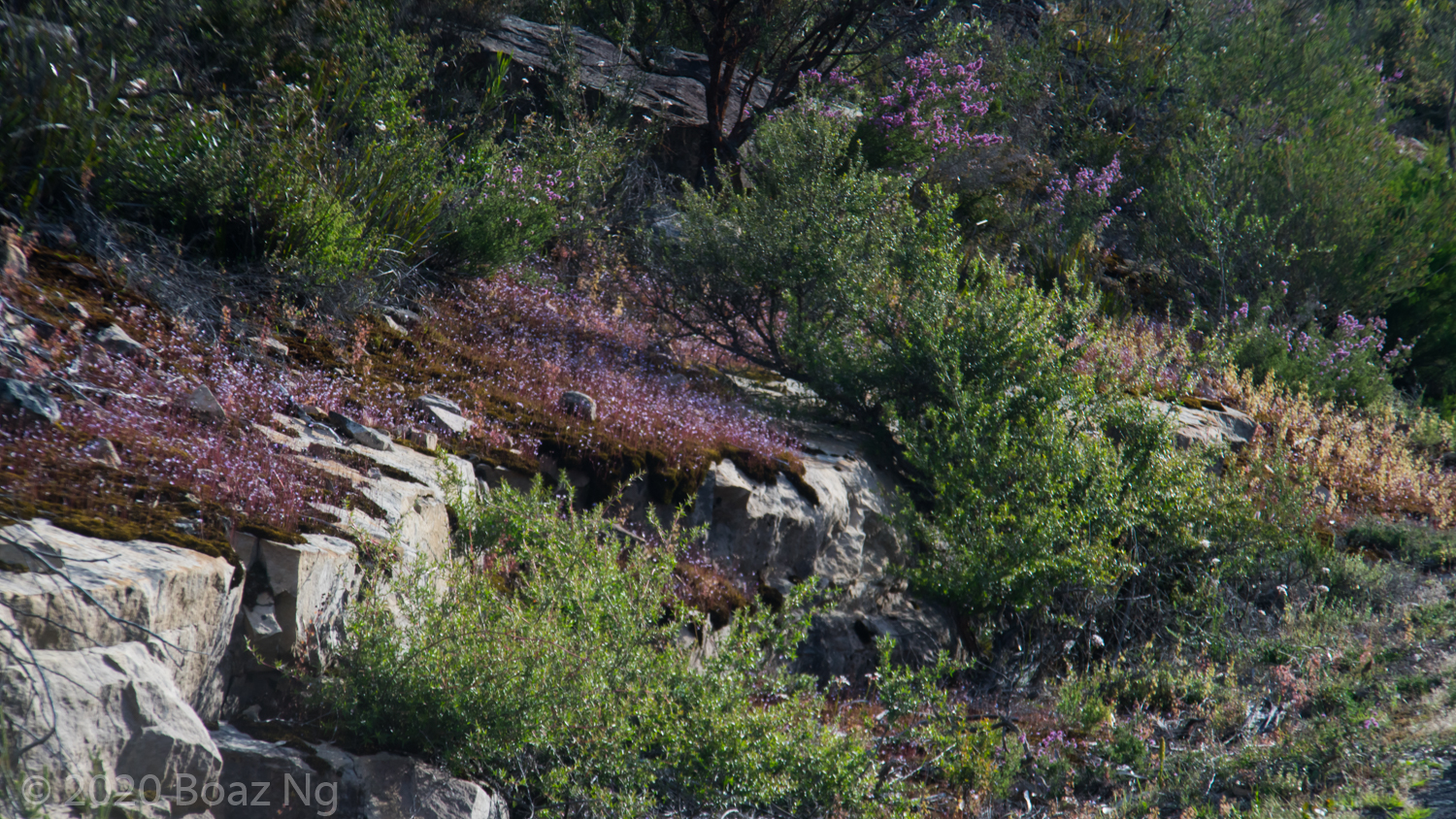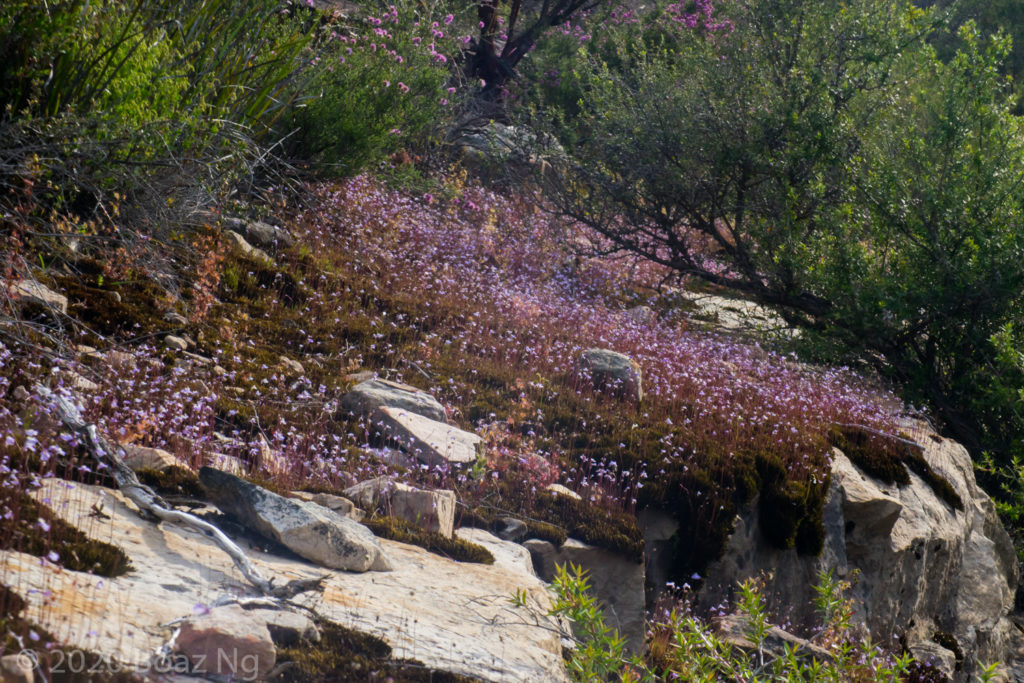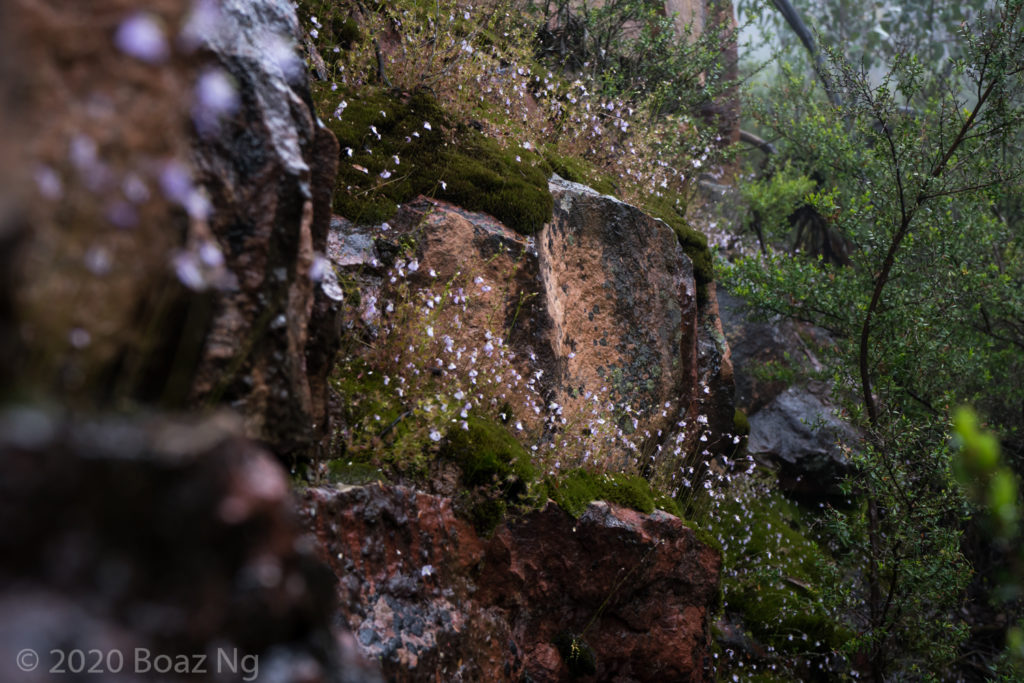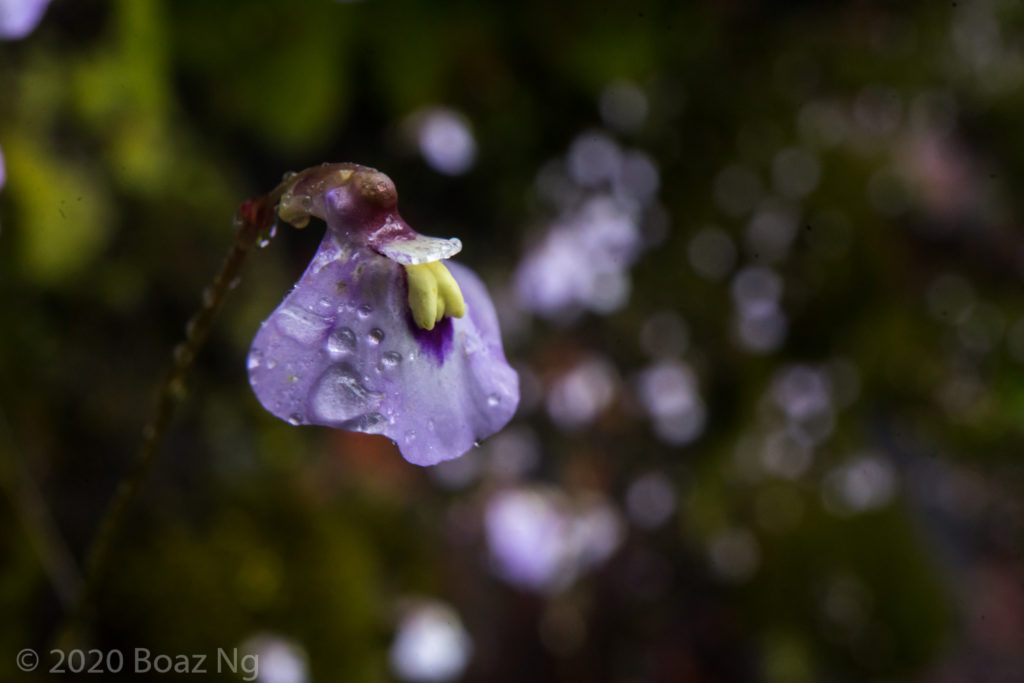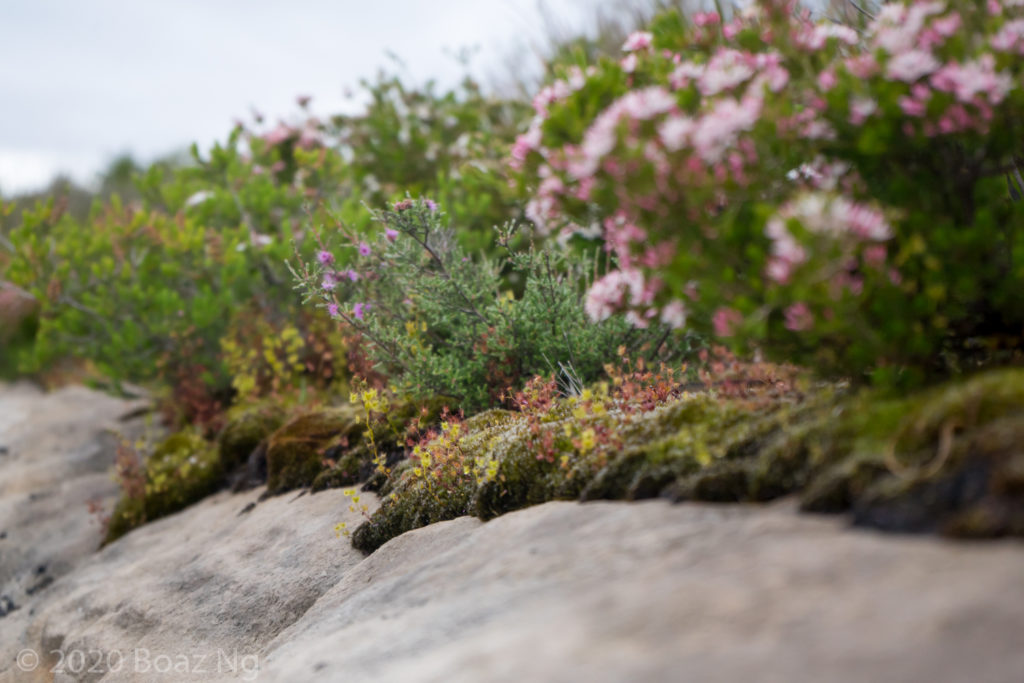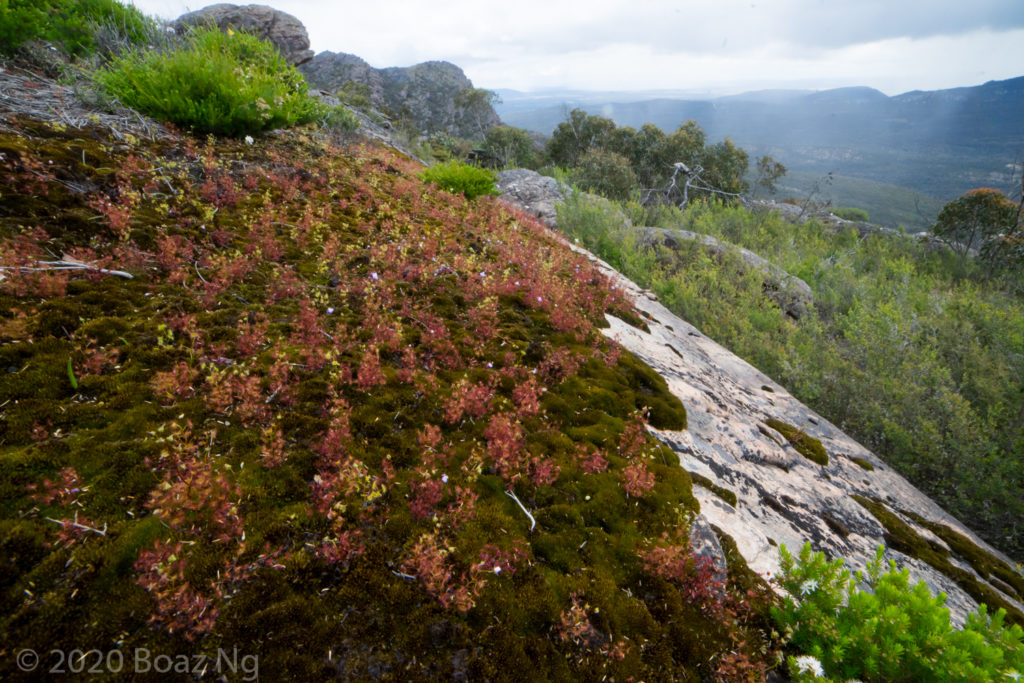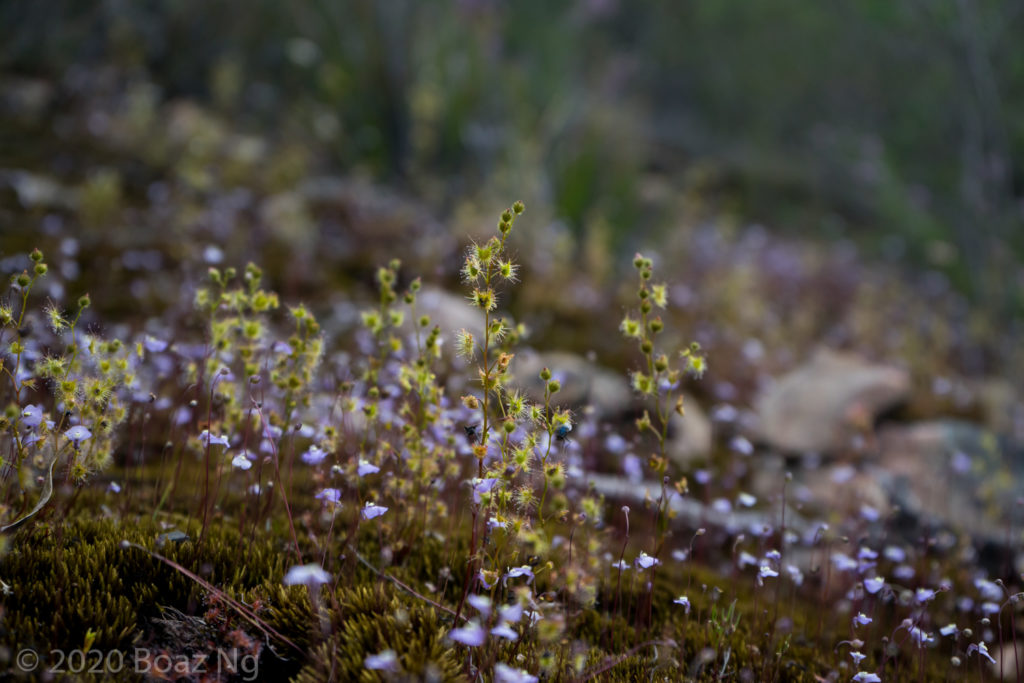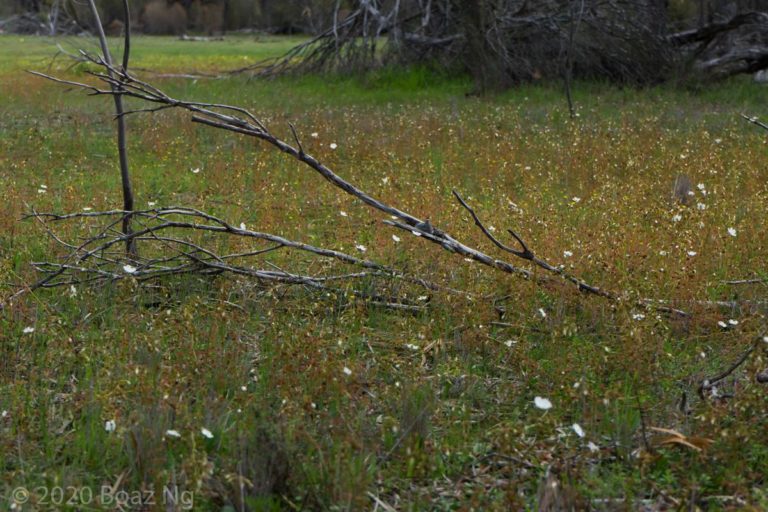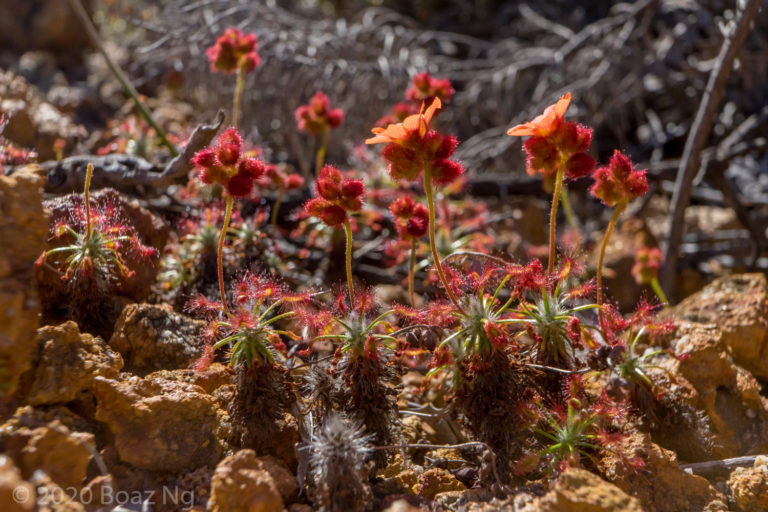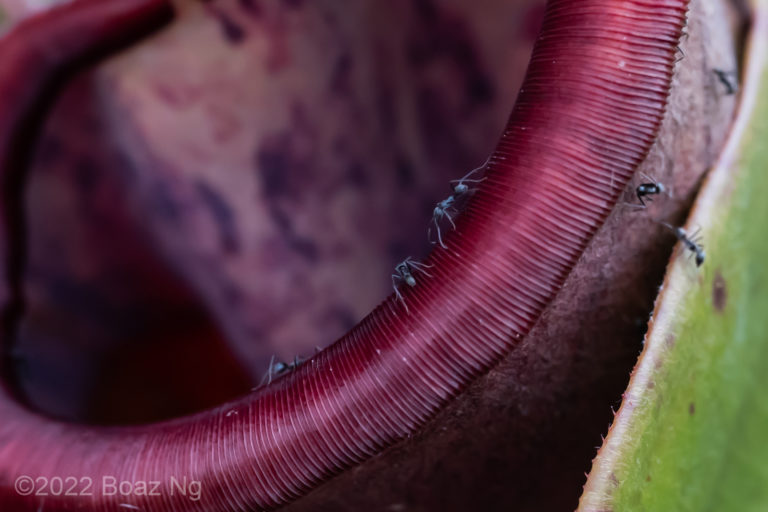The Grampians National Park features a stunning range of sandstone mountains, some reaching over 1,000 m in elevation. Orographic lift and high elevation keeps the summit plateaus wet throughout the cooler months and into late spring. This water makes its way down the sides of the mountains, seeping out wherever the sandstone base rock is exposed at the surface in the upper slopes of the ranges. It is on these seepages where the most stunning populations of carnivorous plants grow.
The seepages look their best in spring, when masses of Utricularia grampiana start flowering. This annual species of bladderwort inhabits shallow moss beds, germinating when the autumn rains revives their substrate and flowering when their habitats begin to dry out. In many sites, the plants grow in impressive densities and can colour an entire rock shelf purple at the peak of the blooming season. The species is an annual and regenerates the population through seed every year.
Often growing alongside U. grampiana is Drosera auriculata. The form in the Grampians attains a vibrant red colouration and reaches around 10-30 cm in length depending on how exposed the plants are. D. auriculata is distinguished from other similar species by its glabrous sepals and long seeds. It is a particularly adaptable plant and can be found wherever good water is provided but against the bare palette of the rock faces in the Grampians, the species is particularly attractive.
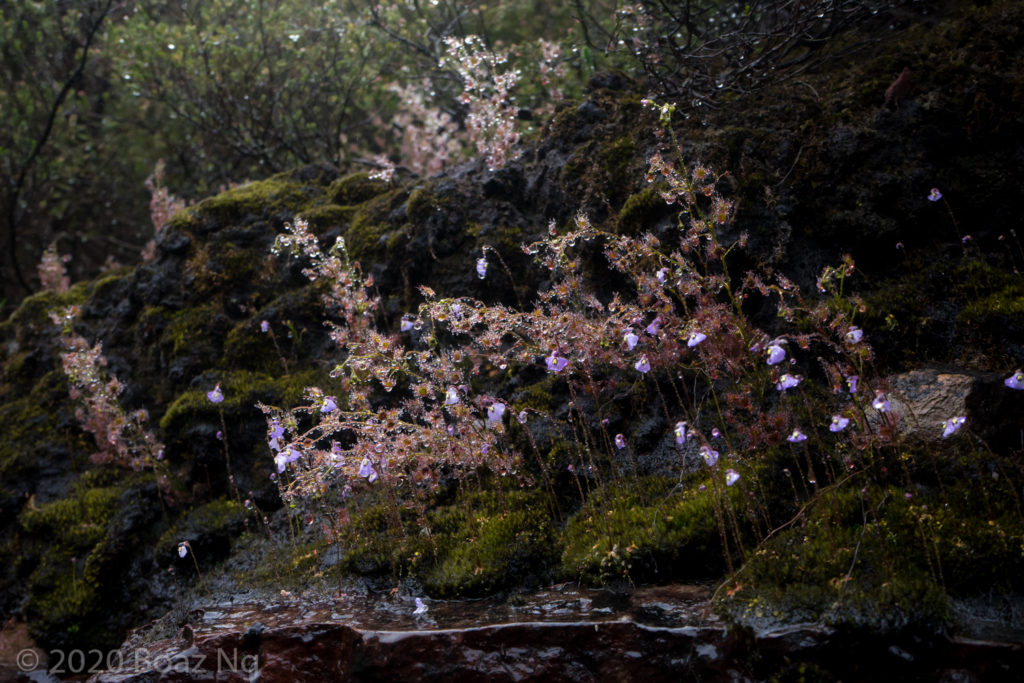
D. auriculata 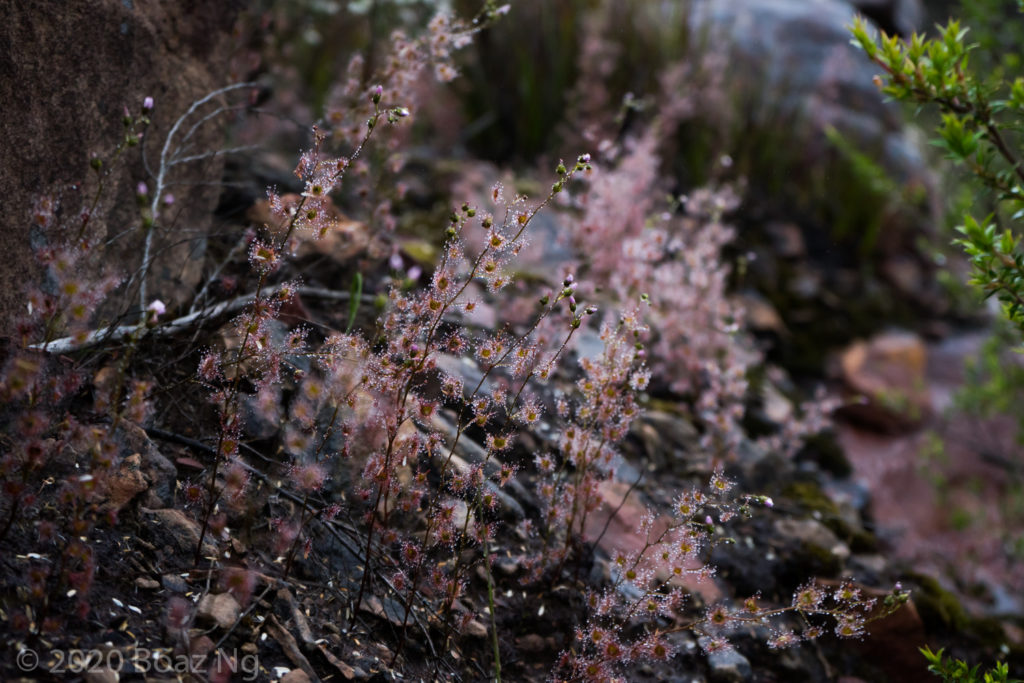
D. auriculata 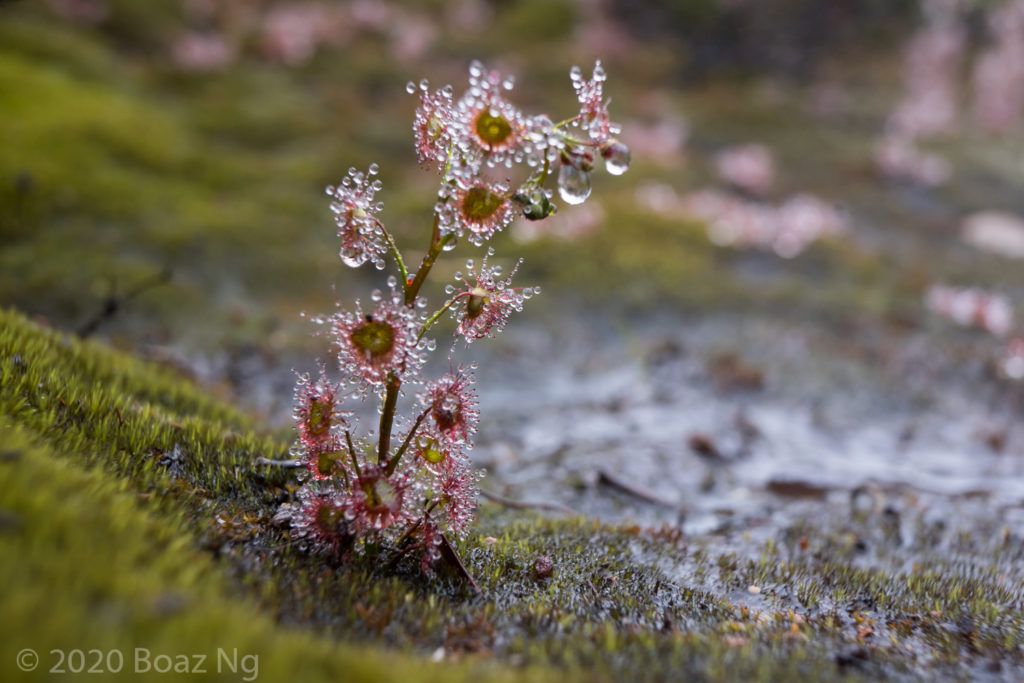
D. auriculata
In certain mountain ranges, Drosera gunniana can be found aside D. auriculata and U. grampiana. This species is more commonly known in flat grassy woodland, so finding it on cliff faces was certainly a surprise to me. Its olive green foliage contrasts beautifully with the red and purple colours of the other plants. D. gunniana is distinguished from D. auriculata by its hairy sepals and bottle shaped seeds.
A third species of erect sundew growing in the seepages is Drosera gracilis. This small plant has a slender stem and bright red basal rosette, which is retained at anthesis. The sepals are moderately densely covered in gland-tipped hairs. The species is common in swampy areas in the lowlands of the Grampians, but occasionally makes its way up the slopes to these seepages. Like the other two stem forming sundews, the plants wait out the dry summer months as a dormant tuber.
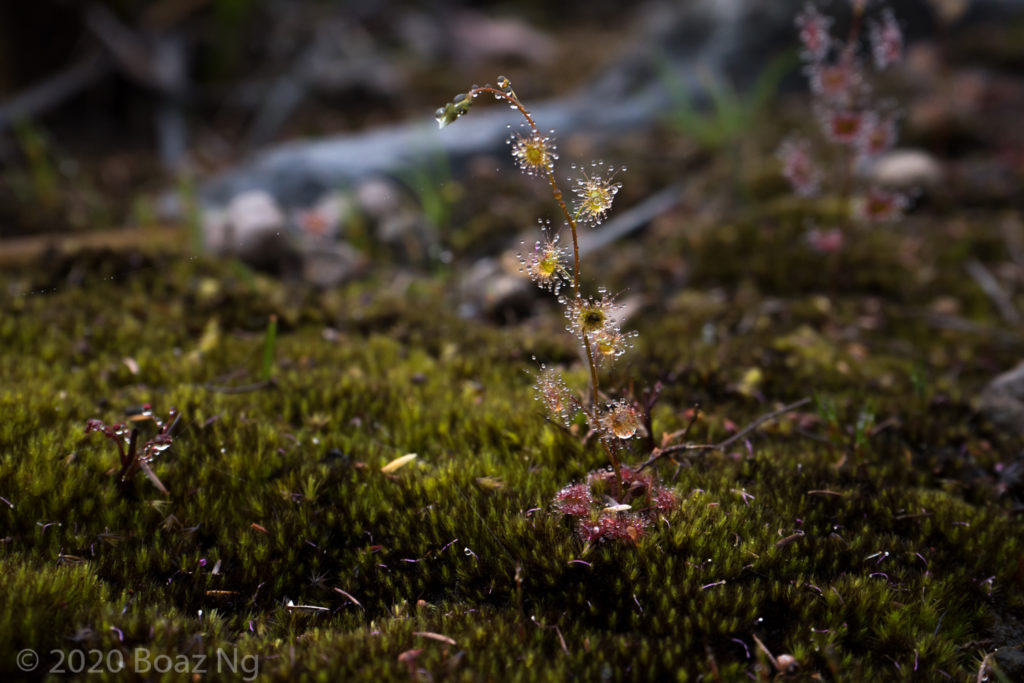
Another tuberous sundew is Drosera aberrans. This species forms a rosette of leaves and is usually coloured bright red when it grows in moss. The plants are common in lowland environments where it generally dormant in early spring. However, on the mountaintops of the Grampians, the cold and wet weather keeps local populations growing even into summer.
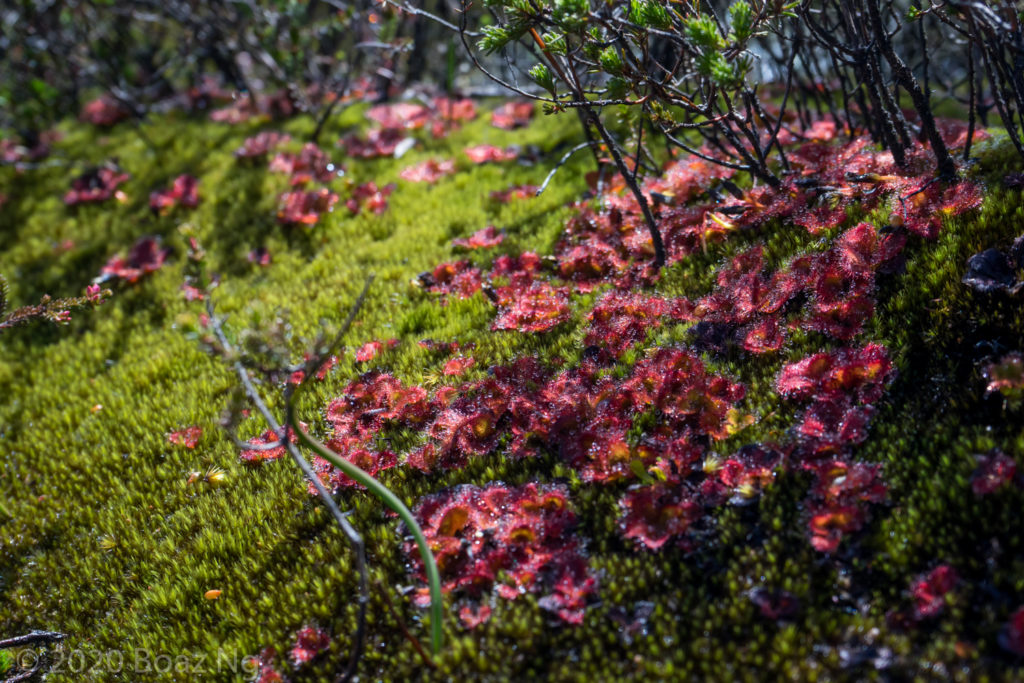
The last species of carnivorous plant I found in the seepages was Drosera glanduligera. Like U. grampiana, this species is a strict annual and grows only in the winter months. By the time I visited in November, the foliage had dried up but its sticky flower stalks were still looking nice. This plant is very common in suitable habitats and can colonise the most remote locations so it was not surprising that it grew in these seepages.
